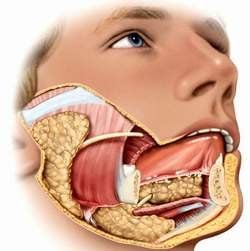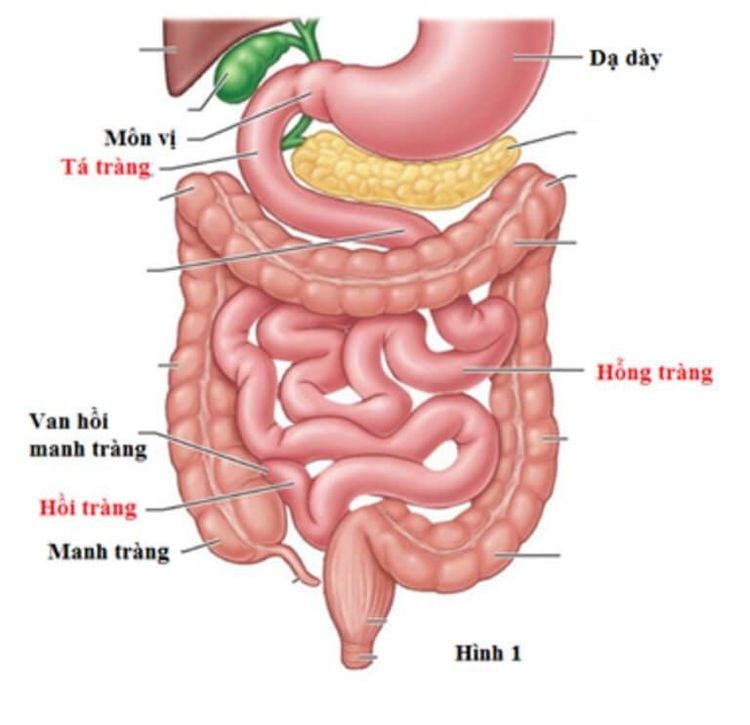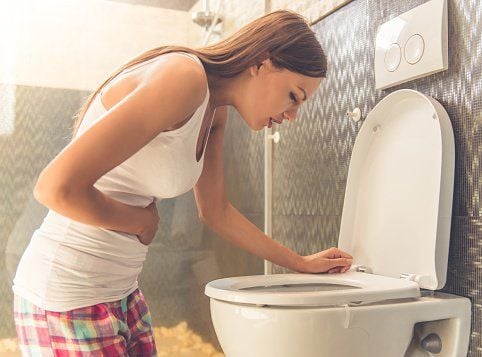This is an automatically translated article.
The digestive system is where the body breaks down food into nutrients that can be absorbed by the body. Understanding how food is digested will help you know how to eat properly for better digestion.
1. The organs of the digestive system
The organs in the digestive system form a link from the mouth to the anus. These organs include the esophagus, stomach, small intestine (duodenum, jejunum, ileum) and large intestine (colon, rectum, and anus). In addition, there are other organs that are part of the digestive system including the liver, gallbladder, and pancreas. Not only that, the digestive system is also home to a large number of bacteria (intestinal microbiota), which help digest certain foods.
2. Details of the food digestion process in humans
The process of the body digesting food in humans takes place sequentially as follows:
2.1 In the mouth
The mouth performs the task of receiving, crushing and mixing food with saliva to form swallowing members. Digestion in the mouth includes chewing and swallowing. Because the swallowing reflex is automatic, when eating, people must chew carefully to avoid choking.
Digestive fluid in the mouth is saliva secreted by the salivary glands. Saliva is an alkaline liquid that softens food, moistens the mouth, and aids swallowing. In addition, saliva contains the enzyme amylase, which begins to break down carbohydrates in the mouth.
Results of oral digestion: Not yet broken down to protid and lipid substances, a small part of the main starch is broken down into maltose sugar. Because the time the food stays in the mouth is only about 15 - 18 seconds (very short), the resolution is not significant, there is no absorption phenomenon.

Quá trình tiêu hóa thức ăn ở người diễn ra tại miệng thường rất ngắn
2.2 In the esophagus
In the process of food digestion in humans, the food in the mouth is swallowed, pushed through the esophagus according to the principle of contraction and relaxation (intestinal peristalsis) until it reaches the lower esophageal sphincter. This is a valve that controls the passage of food from the esophagus into the stomach, preventing it from backing up into the esophagus.
2.3 In the stomach
In the process of digesting food in the stomach, the stomach is considered a reservoir with very strong muscular walls. These muscles contract to move food and mix it together. Gastric juice contains many digestive enzymes such as:
Enzyme pepsin: Digestion of protid; Renin enzyme (pressure, chymosin): Converts caseinogen to casein, then combines with calcium to form a substance like whey. This type of yeast is very important for children, has little effect on adults; Enzyme lipase: Digesting lipids, it works well in alkaline environment. However, the stomach has an acidic environment, so gastric lipase is weak and can only hydrolyze emulsified lipids, turning them into fatty acids, glycerol and monoglycerides. In addition, the stomach also contains hydrochloric acid with the following effects:
Activate pepsin; Increase protein, facilitate easier breakdown; Stimulating gastric peristalsis, participating in the closing of the cardia, closing - opening of the pylorus; Participating in the regulation and secretion of gastric juice, pancreatic juice, bile and intestinal juices; Antiseptic and helps prevent rotten fermentation in the stomach. Stomach has 2 types of mucus (soluble in gastric juice and insoluble with bicarbonate), forming a tough membrane that covers the entire lining of the stomach and duodenum. They, together with bicarbonates, help neutralize acids and protect the stomach lining from damage by acids and pepsin.
The result of the digestion of food in the stomach is that the food is turned into a puree (chyme). In which, 10-20% of the protein is broken down into shorter polypeptides. Besides, a part of lipid has been emulsified, broken down into monoglycerides and fatty acids. Only glucide is left almost undigested because the stomach does not have an enzyme that digests glucide. Therefore, the process of digesting food in the stomach is only a preparation step for the next stages of digestion in the small intestine.
2.4 In the small intestine
From the stomach, semi-digested food (chyme) is carried to the duodenum - the first part of the small intestine by passing through the pyloric sphincter.
Digestion in the small intestine is the most important stage of the human digestive process. In the small intestine, food is broken down into the simplest substances by the action of pancreatic juice, bile and intestinal juices.
The pancreas (about 25cm long, located behind the stomach in the abdomen) produces pancreatic juice, which contains enzymes that digest proteins, lipids, and glucide. Pancreatic juice is secreted into the duodenum through the duodenal papilla (the duct of the pancreas of Vater). Pancreatic juice hydrolyzes up to 80% of the amount of glucose in food. Bile is a greenish-yellow liquid, made by the liver, which helps in the digestion of fats. The only substance in bile that has a digestive effect is bile acids. Bile acids exist as salts in combination with potassium or sodium, also known as bile salts. Bile salts are responsible for emulsifying lipids, increasing the contact area of lipids with lipase enzymes, helping to digest lipids. In addition, bile salts also form micelles that help dissolve lipid hydrolysis products and fat-soluble vitamins, allowing the body to absorb them more easily. Bile also creates an alkaline environment in the intestines, stimulates peristalsis, inhibits fermenting bacteria in the upper small intestine.
Intestinal fluid has enough enzymes to digest protid, lipid and glucide. These enzymes take care of the final stage of digestion, converting the nutrients remaining in the small intestine into simple molecules and then absorbing them.
After digestion in the small intestine, food turns into a viscous and mushy substance (chylo). In which, protid has been hydrolyzed almost completely, turning into amino acids; lipids are almost completely converted into glycerol, fatty acids and a number of other substances; More than 90% of glucose hydrolyzes to glucose, galactose and fructose. These substances can be absorbed by the body. Remaining starch core, fiber and a small portion of tendon, ... undigested will pass through the ileocecal valve to the large intestine.

Quá trình tiêu hóa thức ăn ở người tại ruột non
2.5 In the liver and gallbladder
Blood from the small intestine carries nutrients to the liver for processing. An example is glucose from the breakdown of food, taken to the liver, where it is stored as glycogen. Other nutrients that are also delivered to the liver include glycerol and amino acids. In addition, as above, the liver also has the function of secreting bile, which is then stored and concentrated in the gallbladder.
2.6 Large intestine (colon)
Nutrients have been absorbed into the body from the small intestine, the waste products will be transferred to the large intestine. The large intestine is made up of the cecum, ascending colon, transverse colon, descending colon, sigmoid colon, and rectum. The appendix attaches to the cecum.
Waste products from the small intestine enter the large intestine as a liquid, gradually becoming more solid as water and salts are absorbed by the large intestine. Mucus is secreted to aid in moving stool to the rectum. Stools are stored in the sigmoid colon until bowel movements push them into the rectum and out of the body.
In the digestive system, there are microorganisms. The gut microbiome is a diverse population of microorganisms that live in the digestive system, lining the intestines. The highest concentration of microorganisms in the human intestine is in the large intestine. The microbiome consists of many different types of bacteria. Certain bacteria play an important role in digestion and harvest energy from food that we cannot digest. For example, some gut bacteria can ferment undigested fiber in the large intestine. In addition, the bacteria in the large intestine can also synthesize vitamins that humans cannot produce on their own.
The process of regulating saliva, pancreatic juice, bile, gastric juice and intestinal fluid depends on neural, humoral and cortical mechanisms. When the body is healthy, the mind is optimistic, the fluids will be secreted more and digested better. Therefore, you should create a joyful atmosphere when eating and preparing attractive dishes for the whole family to eat more appetizingly, supporting the food digestion process to take place better.
Please dial HOTLINE for more information or register for an appointment HERE. Download MyVinmec app to make appointments faster and to manage your bookings easily.
Reference source: mydr.com.au













